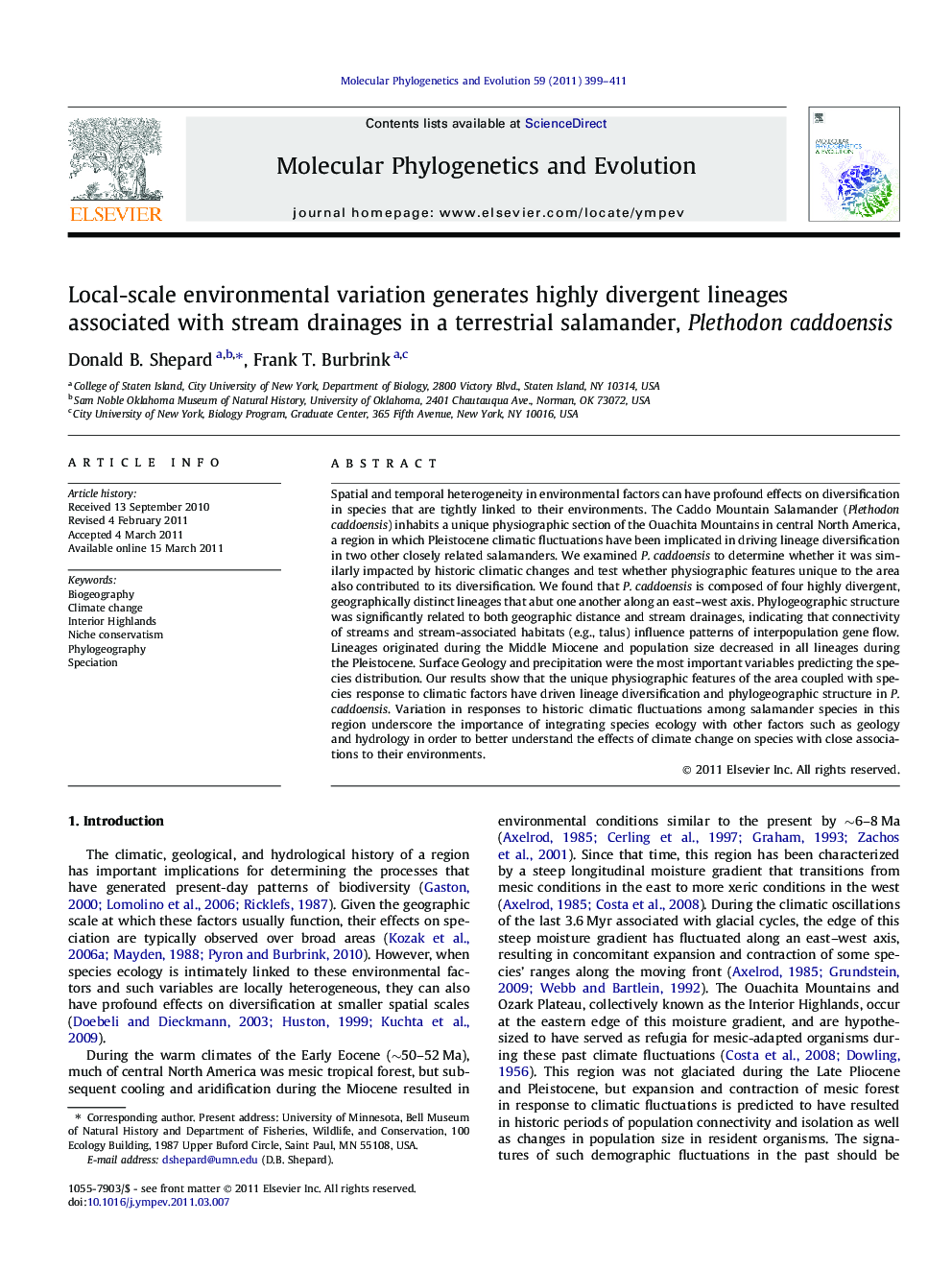| Article ID | Journal | Published Year | Pages | File Type |
|---|---|---|---|---|
| 2834216 | Molecular Phylogenetics and Evolution | 2011 | 13 Pages |
Spatial and temporal heterogeneity in environmental factors can have profound effects on diversification in species that are tightly linked to their environments. The Caddo Mountain Salamander (Plethodon caddoensis) inhabits a unique physiographic section of the Ouachita Mountains in central North America, a region in which Pleistocene climatic fluctuations have been implicated in driving lineage diversification in two other closely related salamanders. We examined P. caddoensis to determine whether it was similarly impacted by historic climatic changes and test whether physiographic features unique to the area also contributed to its diversification. We found that P. caddoensis is composed of four highly divergent, geographically distinct lineages that abut one another along an east–west axis. Phylogeographic structure was significantly related to both geographic distance and stream drainages, indicating that connectivity of streams and stream-associated habitats (e.g., talus) influence patterns of interpopulation gene flow. Lineages originated during the Middle Miocene and population size decreased in all lineages during the Pleistocene. Surface Geology and precipitation were the most important variables predicting the species distribution. Our results show that the unique physiographic features of the area coupled with species response to climatic factors have driven lineage diversification and phylogeographic structure in P. caddoensis. Variation in responses to historic climatic fluctuations among salamander species in this region underscore the importance of integrating species ecology with other factors such as geology and hydrology in order to better understand the effects of climate change on species with close associations to their environments.
Graphical abstractFigure optionsDownload full-size imageDownload as PowerPoint slideHighlights► Plethodon caddoensis is composed of four divergent, geographically distinct lineages. ► Phylogeographic structure is explained by geographic distance and stream drainages. ► Diversification occurred in the Middle Miocene and Ne decreased in the Pleistocene. ► Surface Geology and precipitation best predicted the species distribution. ► Interaction of physiographic and climatic factors has driven lineage diversification.
